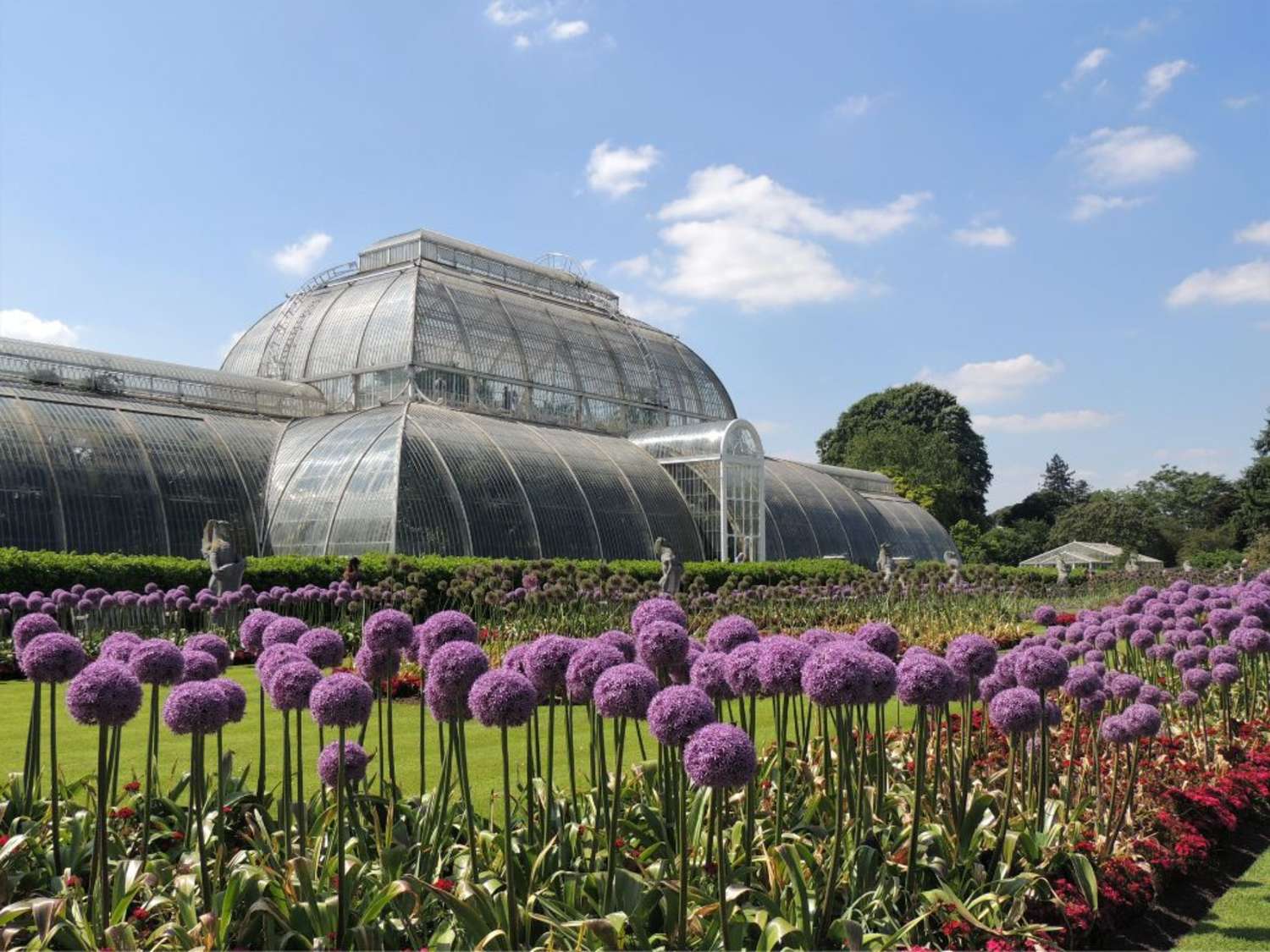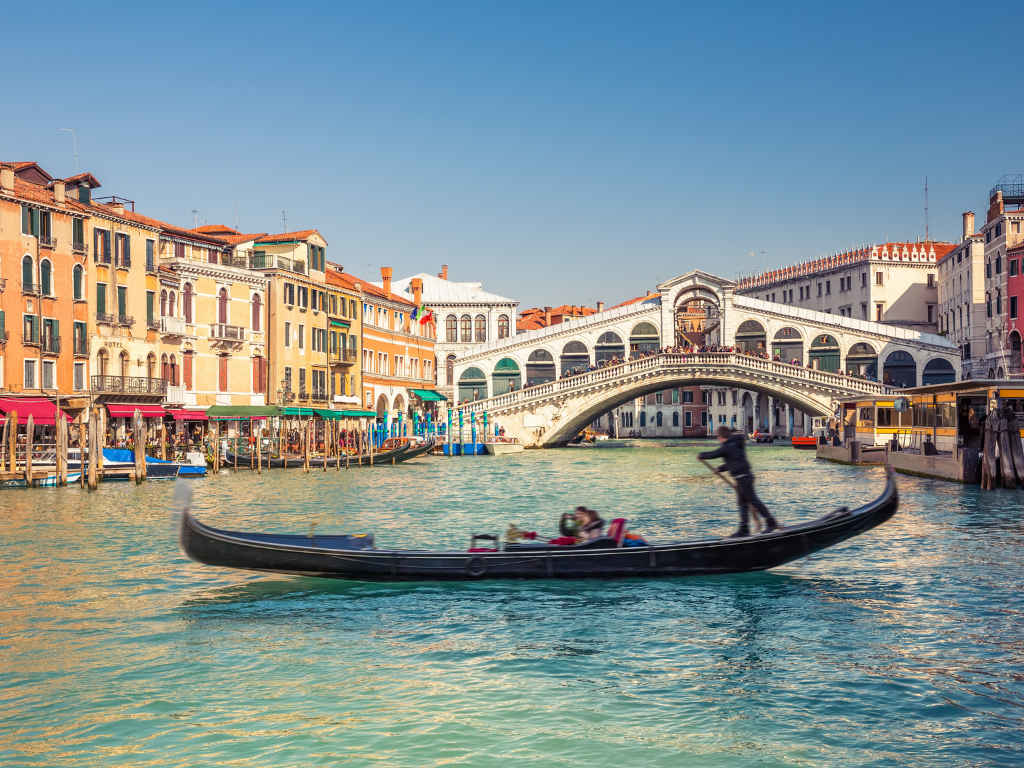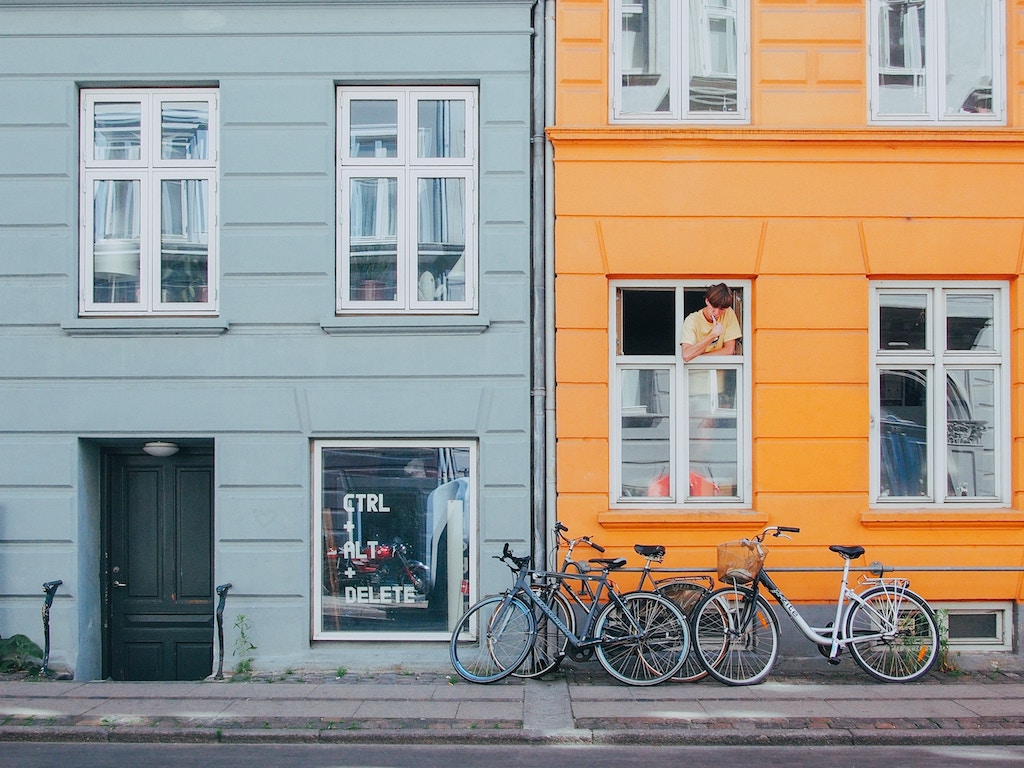London is known for its parks and gardens, but not many people know about the hidden gems that are scattered around the city. From royal gardens to secret gardens, there are a plethora of options for nature lovers in the city. Which ones will you visit on your next trip to the city?
Join us on a journey through 9 of the most beautiful gardens in London. From the famous Royal Parks like Hyde Park and Kensington Gardens to lesser-known gems like the Chelsea Physic Garden and the Barbican Conservatory, we will show you the best places to find tranquility and natural beauty in the city.
All of the gardens on this list are sure to delight and inspire! Read on to explore the diversity of London's gardens — and discover which ones are worth a visit.
Royal and Palace Gardens to Visit in London
1. Kew Royal Botanic Gardens
The Kew Botanical Gardens were first founded in 1840 and have grown to become one of the most famous gardens in the world. Located in southwest London, they have been designated a UNESCO World Heritage site because they host over 50,000 unique plant species. Learn even more during a Context Tour of the Kew Botanical Gardens, hosted by a local guide.
During your tour, you can explore the gardens' many greenhouses, including the Palm House, the Temperate House, and the Princess of Wales Conservatory. If the weather is nice, step outdoors to experience the delightful Rose Garden and the Japanese Garden. In addition to the gardens, Kew houses a library, art collection, and herbarium – which preserves 8 million unique specimens.
Perhaps most important of all is their Science Division, which is made up of several departments, including the Jodrell Laboratory, which focuses on plant systematics and evolution, and the Millennium Seed Bank, which aims to conserve the world's seed-bearing plant diversity.
At the gardens, you can explore the canopies of local trees, discover flora and fauna from each continent, learn about the importance of bees to the local environment, and see one of the largest and most diverse collections of orchids in the world.
To learn more visit their official website.
2. Kensington Palace Gardens
Kensington Gardens is one of the most popular Royal Parks of London and receives hundreds of thousands of visitors each year. Originally, its gardens were for the exclusive use of Kensington Palace’s royal residents.
However, that rule was changed in the 19th century when Queen Victoria decided to expand access to the property after the death of her husband, Prince Albert. Some of the garden's most notable features include the Italian Gardens, the Albert Memorial, and the Serpentine Gallery.
More recently, a cast-bronze statue commemorating Diana, Princess of Wales, was unveiled by her two sons on what would have been her 60th birthday. The statue is located in the Sunken Garden, an area of the palace grounds that was one of Diana's favorite spots and where she used to walk her sons when they were young.
You can learn more about the history of London’s parks during Context’s Royal Palaces and Parks of London Tour.
3. Hampton Court Palace Gardens
Next time you’re in London, you must enjoy a Context Tour of Hampton Court Palace.
Originally built for King Henry VIII in the 16th century, theirs is one of the most iconic and historic garden landscapes in the United Kingdom. Covering over 60 acres, the palace gardens were a popular retreat for courtiers and aristocrats – who would participate in the many outdoor recreational tournaments and enjoy a reprieve from the city.
One of the most popular gardens is the Great Fountain Garden with ornate fountains and water features. Today is a popular place for locals to take a stroll or to have a picnic on the lawns.
Another must see is the Privy Garden, a hidden gem that offers a peaceful and secluded spot, where visitors can find a variety of different flowers and plants, including many rare and exotic species. And did you know that The palace's Great Vine, which is considered one of the oldest grapevines in the world, was planted in 1768 and still produces grapes today?
One final notable feature of the Hampton Court Gardens is its famous maze – which was created in the 17th century and it's one of the oldest surviving mazes in the world. The maze is made up of over half a mile of paths — a great challenge for visitors!
4. Charlton House Peace Garden
Charlton House Peace Garden is located in the London borough of Greenwich. The garden is situated on the grounds of Charlton House, a Jacobean mansion that was built in the early 17th century. The house and its grounds were originally owned by Sir Adam Newton, a tutor to King Charles I, but over the centuries it passed through various owners.
The house was used for a variety of purposes, including as a school and a hospital, before being acquired by the local council in the late 19th century.
In the early 21st century, Charlton House Peace Garden was created in a corner of the grounds as a peaceful retreat for the local community, the garden was a project that was led by the local community who converted the space into a green haven, into the garden you can find sculptures and statues of peace activists, a labyrinth and a tranquil pond, reflecting the theme of peace and tranquility, that is the main idea behind the garden.
There are many interesting things to see at Charlton House Peace Garden, but three must-see highlights are:
- The Sculptures and Statues: One of the main draws of the garden are the sculptures and statues of peace activists, and figures that symbolize the theme of peace and non-violence. These sculptures provide an interesting contrast to the historical setting of the Jacobean mansion, and they give the garden a unique atmosphere.
- The Labyrinth: The garden features a tranquil labyrinth, which is a meditative and contemplative feature that adds a sense of wonder and introspection to the garden. Walking the labyrinth may help visitors to clear their minds and to focus on their inner selves.
- The Pond: The pond in the garden is a beautiful and tranquil feature that adds to the peaceful atmosphere of the space. The pond is surrounded by greenery and visitors can take a moment to sit and enjoy the reflections of the sun on the water or watch the many different birds that come to drink from the water. The pond is also a great place for children to explore the ecosystem and wildlife.
5. Fulham Palace Gardens
Fulham Palace Gardens is the second oldest botanical garden in London, part of an estate with a rich history – dating back to 704 AD. The palace has been the residence of over 130 Bishops of London and was at one point used as a residence by King Henry VIII and Sir Thomas Moore.
During both World Wars the gardens were used to grow food to support the war effort and the Palace was used as a convalescent hospital. During the London Blitz of 1940, hundreds of local residents retreated here after their homes were destroyed.
Today the palace and its gardens are now open to the public year-round, with free admission. Visitors can enjoy the palace's many features, including the Great Hall, and the Bishop's Library – not to mention the palace's beautiful herb garden, rose garden, and wildflower meadow. Click here for additional information to help plan your visit.
6. Eltham Palace and Gardens
Eltham Palace, once a moated manor, has changed hands many times since it was first noted as belonging to a half-brother of William the Conqueror in 1086 AD. It is said that Henry VIII spent much of his childhood here, but he was among the last royal to do so.
Many artists have taken inspiration from its palace and gardens over time, including Turner, Girtin, and Sanby. In 1933, the Courtauld family bought the estate from the Royals and retrofitted the central mansion into the Art-Deco style.
Eltham is now a historic complex located in southeast London and open to the public. To learn more about Eltham Palace and Gardens, you can visit the English Heritage website which features information about the palace's history, current exhibitions, and opening hours.
7. Chiswick House and Gardens
Chiswick House and Gardens located in West London, is a stunning example of 18th-century British architecture and landscaped gardens. The house and gardens were created by architect William Kent and his patron Richard Boyle, the 3rd Earl of Burlington, between 1725 and 1738, who were influenced by the classical architecture of Italy.
The gardens at Chiswick were revolutionary in their natural-looking landscape and went on to influence gardens across the world. The estate passed to the Dukes of Devonshire and the house was later used as a mental health institution and rental property before being restored and opened to the public in 2010. Today, it welcomes over one million visitors annually.
The House is considered an excellent example of the English Palladian architectural style and it's been used as a filming location for several movies and tv shows such as
- The Crown (TV series)
- Pride and Prejudice (TV series)
- The Other Boleyn Girl (film)
- Sherlock Holmes (film)
- The Favourite (film)
- Little Women (film)
- The Young Victoria (film)
- Emma (film)
- The Queen's Gambit (TV series)
To learn more, you can visit the Chiswick House and Gardens Trust website, which features information about the history of the house, the current exhibitions and opening hours.
8. The Tower of London Garden
Dating back to the 13th century, the gardens of the Tower of London complex are too-often overlooked. As you venture into the geometric design – featuring a central lawn, flower beds, hedges, and statues – you’ll see rare plants and flowers including roses, lilies, and herbs.
You can also take in the White Tower, the oldest building in the complex as you read about the garden's history – including its role in the Jubilee celebrations of the late Queen Elizabeth II.
Included with Tower admission costs, the gardens a must-see spot for history and nature lovers. Don't miss out on this unique experience. Visit the official website for more information.
9. The Green Drawing Room Garden at Somerset House
This garden is located on the south side of the historic Somerset House estate, which was built in the 18th century by architect William Chambers. The garden was first designed as a private courtyard for residents only but opened to the public in 2000.
To learn more about the Somerset House, visit the official Somerset House website which provides information about the history, opening hours, and current events.
Secret Gardens to Visit in London
10. Kyoto Garden in Holland Park
This garden is a tranquil oasis located within the boundaries of Holland Park. In 1991 it was gifted to London by the city of Kyoto as a gesture of goodwill and harmony between the two cities. The Kyoto Gardens features a traditional Japanese design, including bright pink cherry blossom trees and beautiful red Japanese maple trees scattered around a central pond.
11. The Flanders Fields Memorial Garden
Located in London's Victoria Embankment, this solemn garden serves as a tribute to the British soldiers who fought and died in the Flanders region of Belgium during World War I.
Visitors can learn more about a wide range of plants and flowers that would have been found in the Flanders region. This includes blood-red poppies, which have become a symbol of remembrance for those who sacrificed their lives during WWI. You can also see a replica of the Menin Gate, which bears the names of thousands of people who went missing during this era.
12. Chelsea Physic Garden
The Chelsea Physic Garden is the oldest botanical garden in London, dating back to 1673. The site was founded by the Society of Apothecaries to provide a place for medical apprentices to study the medicinal properties of plants – and it is now home to more than 5,000 species of diverse plants from all over the world.
Thousands of botanists travel to London each year to learn about this fascinating collection of medicinal plants. Visitors can enjoy a guided tour of the garden, or simply relax and enjoy the beautiful surroundings.
13. The Hill Garden and Pergola
Rising above London's Hampstead Heath is the Hill Garden and Pergola. This garden – one of the city’s best hidden gems – features a beautiful pergola, built in the early 20th century, which spans over 100 feet and is covered in a variety of climbing plants.
The garden also has a variety of remarkable shrubs and trees to enjoy – including rhododendrons, azaleas, and camellias, as well as a small pond and a rock garden. Visitors can take in the beautiful panoramic views of London from the garden's terrace.
14. The Shakespeare Garden
The Shakespeare Garden is nestled within London's Regent's Park and is dedicated to the memory of the famous playwright William Shakespeare. As you walk along the pathways, you’ll enjoy many unique varieties of roses, lavender, and pansies; the garden is filled with plants and flowers that are mentioned in Shakespeare's plays and sonnets.
15. The St. George's Garden
The St. George's Garden is a small and secluded garden located in London's Pimlico neighborhood. The garden features a variety of plants, including a small herb garden, as well as a pond, a rock garden, and a sundial.
The garden was founded during the 19th century and has become a popular, peaceful spot for visitors and locals to relax and enjoy the beauty of nature. The garden is also home to a statue of St. George, the patron saint of England, which was erected in the garden in the early 20th century.
Other Can't-Miss Stops for Garden Enthusiasts
The Garden Museum in London
This unique museum is located in the former church of St Mary-at-Lambeth. Its galleries tell the complex historical narrative of British Horticulture – through its collection of art, tools, and artifacts dating back to the 16th century.
When you visit, you’ll enjoy an array of interactive exhibits, including a replica of a 17th-century knot garden, a Victorian greenhouse, and a display of historic gardening tools. If you time your visit right, you can also enjoy their public events and workshops throughout the year, including tours of the nearby Lambeth Palace Garden.
Columbia Road Flower Market
Since 1869, this flower market has been a gathering place for gardening enthusiasts from all across the city. Its a favorite destination among locals, tourists and professional florists – who come to see the wide variety of flowers, plants, and supplies on offer.
Visitors can find everything from exotic blooms to traditional English favorites, as well as a selection of vintage and handmade goods. The market is open every Sunday and its best to visit early in the morning to try and enjoy the best selection. Additional details can be found here.
Context Kew Garden Tour
Discover the beauty and history of English gardens on Context Travel’s Kew Royal Botanical Gardens tour. Led by a licensed guide, you'll explore the stunning landscape of Kew and learn about the history and design of English gardens.
From the manicured lawns and flowerbeds to the rare and exotic plants, you'll gain an appreciation for the artistry and science behind these masterpieces. This tour is perfect for garden enthusiasts and history buffs alike.
Don't miss out on the opportunity to delve deeper into the rich history and beauty of one of London's most renowned gardens. Join us on this one-of-a-kind tour and experience the best that Kew has to offer!
Camden Market and Gardens
Camden Gardens are located in the heart of London and are home to a variety of different gardens, including the Camden Lock Market Garden, the Regents Canal Garden, and the Camden Market Garden.
Dating back to the early 19th century, Camden Market has evolved from a small trading post to a bustling market and hub for the local community – making it the perfect place for tourists to get a taste of the authentic daily life in London. The space is known for its eclectic variety of shops, delicious restaurants, and talented musicians who perform for free.
However, the remarkable flowers and plant species that adorn its gardens are not to be missed. The rose garden and open-air theatre are unique attractions and popular meeting places for local community events.
Key Takeaways
In conclusion, few cities offer as many delightful gardens to visit as London does. From the regal and historic nature of its many royal gardens to its tranquil and less crowded Kyoto-inspired gardens there are options available for everyone to enjoy.
Whether you’re seeking a retreat from the hustle and noise of the city, or looking to keep your children entertained during a pause in the rain – the options are endless. Each of London’s gardens has its own unique historical narratives and botanical highlights. Next time you’re traveling through London, be sure to leave enough time in your itinerary to explore these natural landmarks.













